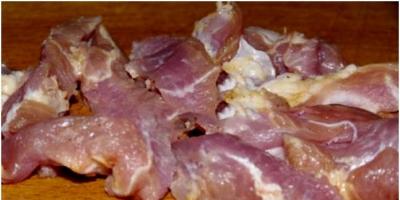Turning is a specific branch of woodworking; its difference lies in working with a rotating workpiece driven by the engine of a lathe. The craftsman feeds the cutting tool (cutter, milling cutter) with his own hands or by means of a mechanical drive. For reliable fixation of the workpiece and transmission of torque to it, various devices and lathe chucks, the diversity of which is due to the large number of turning techniques and techniques. Some of them can be made with your own hands without special equipment.
Thrust centers
Turning centers are divided into driving (geared) and thrust centers. The first ones are installed in the headstock of the machine and directly transmit force; for better adhesion to wood, they have several teeth. The second ones are placed in tailstock and support the part; by design they can be rotating or stationary. As a rule, centers have a Morse tapered shank.
Faceplates
A faceplate is a round metal plate with holes for fastening with self-tapping screws, mounted on the machine shaft using threads or bolts. They differ in diameter, presence or absence of teeth and additional fastening elements. Used for turning plates, bowls and other similar products. Often made by hand. Working with the faceplate is thought out so that part of the wood into which the screws are screwed is subsequently removed.
Jaw chucks
The most convenient and functional. They work both in compression and expansion, so they can grip the workpiece both from the outside and from the inside. They differ in the number of cams and their drive mechanism.
Unlike metalworking, two- and three-jaw chucks are practically not used for turning wood. Options with a spiral drive and non-removable cams are also not popular.
The most common type of lathe chuck for woodworking is self-centering four-jaw, with a rack-and-pinion transmission mechanism and replaceable jaws.
On Russian market they are supplied by the brands Axminster, Jet, Barracuda and other lesser known companies.
Making a lathe chuck for wood with your own hands
The manufacture of jaw chucks requires high-precision industrial equipment and it is hardly possible to make them in a home workshop. However, there are more simple designs, which is not difficult to build with your own hands.
Homemade wood turning faceplate with adjustable clamps
You will need a flat sheet of steel with a thickness of at least 10 mm, a steel angle 50x50 mm, eight M8x30 bolts with nuts and washers. You should think in advance about how the device will be mounted on the machine and, if necessary, make or purchase an appropriate threaded bushing. After this you can proceed:
- Mark on the existing plate a circle of the required diameter and two axes passing through the center and intersecting at right angles.
- Cut out the faceplate blank using a jigsaw according to the markings and sand it thoroughly.
- Cut through grooves along the resulting axes, stepping back a few centimeters from the center and not reaching 2 - 3 cm to the edges. This can be done easier by pre-drilling holes slightly larger in diameter than the stocked bolts.
- Saw off four identical sections from the corner and drill one of the shelves of each with the same drill.
- In the second shelf of the corners, cut an M8 thread and screw in the bolts.
- Weld or solder a threaded bushing for mounting on the shaft.
- Screw the corners to the faceplate with bolts through washers.
- Attach the resulting wood chuck to the lathe.
To fix this homemade cartridge the corners are moved to the desired position and secured by tightening the nuts; the part is finally tightened with bolts screwed into the threaded shelves.
DIY vacuum chuck for wood
If your lathe's headstock spindle has through hole To knock out the gear center, you can supplement your arsenal with a homemade vacuum chuck. For this you will need:
- Powerful vacuum cleaner
- Bearing closed type, approximately equal in outer diameter to a vacuum cleaner hose
- A piece of thick rubber hose for connecting the vacuum cleaner and the bearing
- Clamp
- Standard faceplate with hole in the center
- A small piece of MDF or thick plywood
- Textolite for adapter
A sleeve is machined from PCB, one side of which should be equal in diameter internal size bearing, the other - spindle. This homemade adapter It is pressed into the bearing using glue; it will be held in the machine due to the tightness of the fit. The resulting structure is connected with a piece of hose to the vacuum cleaner and secured with a clamp.
A disk is cut out of MDF or plywood, attached to a faceplate and ground. It is better to make the surface slightly concave. To ensure a tight fit, linoleum or thin rubber is glued on top.
The disk is drilled through the center to remove air.
A similar self-made chuck provides a pressing force of 40 - 50 kg, sufficient to hold medium-sized parts during finishing.
One of the most common devices for processing metal workpieces is a lathe. It can be used to make elements such as bushings, couplings, bolts, nuts, flanges and others. The equipment can be purchased ready-made in specialized stores, but it is possible to make a homemade metal lathe at home.
Features of the machines
There are many types of lathes for metal processing. Each of them has its own design features, on which their functionality depends. In addition, each type has the ability to perform additional operations, such as milling or drilling.

Regardless of the type of unit, their design may consist of the following components:

Depending on the type and model of the device, it can be equipped with additional attachments that will increase the functionality of the equipment.
Types of universal devices
Modern manufacturers offer users an extensive range of lathes. Among the most popular, the following types can be distinguished: turning-screw-cutting, turning-milling, turning-carousel, turning-turret.
Screw cutting machine
 A special feature of this type of equipment is the presence of a tailstock quill stroke. Thanks to this, it is possible to equip it with a drilling chuck. This allows the machine to be used not only for turning operations, but also for turning workpieces with different profiles, leveling, making grooves and recesses in workpieces, cutting sizes to the required specifications, and drilling holes. For this, dies, cutters or taps can be used.
A special feature of this type of equipment is the presence of a tailstock quill stroke. Thanks to this, it is possible to equip it with a drilling chuck. This allows the machine to be used not only for turning operations, but also for turning workpieces with different profiles, leveling, making grooves and recesses in workpieces, cutting sizes to the required specifications, and drilling holes. For this, dies, cutters or taps can be used.
By using screw-cutting turning units, you can work with workpieces made of ferrous or non-ferrous metals. This type of device is most often used in tool production, instrument making or watchmaking.
If the choice fell on a screw lathe, it is recommended to take into account the following properties:

Milling device
 Using this type of equipment, you can turn workpieces not only from ferrous and non-ferrous metals, but also from plastic and wood. The design of the device combines two types of machines (milling and turning).
Using this type of equipment, you can turn workpieces not only from ferrous and non-ferrous metals, but also from plastic and wood. The design of the device combines two types of machines (milling and turning).
Universal turning and milling machine can be used to perform such types of operations as through turning, threading, chamfering, filling fillets, cutting straight and curved grooves, drilling holes. This became possible thanks to the presence of a milling part located in vertical plane beds. Such machines are often installed in school workshops.
Popularity turning and milling equipment due to the presence of its inherent advantages:
- Availability. The combination of two types of machines leads to cost savings.
- Compact size. It can be installed in a workshop with a small area.
- Possibility of mounting a variety of additional elements(cutter, drill, tap, reamer, milling cutter, chisel).
When choosing this type of equipment, it is necessary to take into account the following characteristics:
- distance between centers;
- workpiece size;
- diameter of crosscut and end mills.
The presence of these qualities determines the popularity of turning and milling equipment among users.
Carousel machine
Machines of this type are mainly used for processing large diameter(more than 2000 mm) and sizes in large enterprises.
Revolving unit
The main purpose of this type of device is to process workpieces made from calibrated rods. The peculiarity of the machines is that the cutting mechanism is mounted on a rotating drum.
Machine tools with numerical software
When working with this type of machine, minimal operator participation is required. It is also worth noting the ability to perform all types of operations with high precision.
Each of the above types of metal lathes has design features and purpose.
Self-production
 If we talk about what you can make from a drill with your own hands, you should pay attention to a lathe, which you can make at home. This will not only help save money, but will also make it possible to perform a fairly large list of operations with different materials.
If we talk about what you can make from a drill with your own hands, you should pay attention to a lathe, which you can make at home. This will not only help save money, but will also make it possible to perform a fairly large list of operations with different materials.
In order to make a metal lathe with your own hands, drawings of which can be found in specialized literature, you must first decide on the bed. It is considered one of the most significant pieces of equipment. It is on the bed that the turning attachment for the drill is mounted.
 To make the frame, you can use a slab made of a material such as wood, up to 21 mm thick. The drill is fixed by the neck of its body, on which the auxiliary handle will subsequently be mounted.
To make the frame, you can use a slab made of a material such as wood, up to 21 mm thick. The drill is fixed by the neck of its body, on which the auxiliary handle will subsequently be mounted.
In order to be able to saw materials such as plywood or hardboard, you need to install a drill chuck on the frame circular saw, the diameter of which does not exceed 2 mm. To ensure ease of operation of the machine, you can also mount an additional handle.
It is possible to replace the disk with a flat cutter. Thanks to this, the operator will be able to make grooves of shallow depth.
 Now you can start making the stop, which is designed to serve as a tailstock. Thus, a homemade support for a lathe can be made with your own hands from two wooden blocks and one adjustment screw with a sharpened tip. This will make it possible to use the machine for processing small wooden workpieces.
Now you can start making the stop, which is designed to serve as a tailstock. Thus, a homemade support for a lathe can be made with your own hands from two wooden blocks and one adjustment screw with a sharpened tip. This will make it possible to use the machine for processing small wooden workpieces.
If we talk about how to make a lathe from a drill, you should take into account that there are several options for devices that you can make yourself, the main thing is to have a ready-made template.
The caliper tends to wear out during operation of the machine. At the same time, the possibility of backlash cannot be excluded, which will have a negative impact on the quality of the operation performed. To avoid this situation, it is recommended to periodically adjust and tune the caliper.
A woodworking joinery machine has a frame. To make it, you can use beams or channels made of metal. Their thickness and dimensions are directly dependent on the load with which the equipment will be operated.
 Shafts with guides located longitudinally are mounted on the beams. To fasten them, you can use a welding machine, bolts or a screwdriver.
Shafts with guides located longitudinally are mounted on the beams. To fasten them, you can use a welding machine, bolts or a screwdriver.
The headstock can be made of a hydraulic cylinder, into the cavity of which two bearings are mounted. The thickness of the cylinder walls can vary from 5 mm or more. The hydraulic cylinder cavity is filled with a special lubricating fluid. Then the electric drive is installed.
The electric motor is responsible for the movement of the cutting part of the machine. Engine power has a direct relationship to the power of the device. When choosing it, it is necessary to take into account the size of the workpieces, which will be processed on the wall:
- to work with small workpieces, you can use a drive with a power of no more than 1 kW;
- if it is necessary to process large-sized workpieces, it is necessary to choose a motor whose power ranges from 1.5 to 2.5 kW.
A manual machine for processing metal or wood should be assembled taking into account the fact that all its components must be insulated. This will ensure operator safety when working with the machine, as well as structural strength.
Possible cutting mechanism options
The machine mechanism must be equipped with a cutting part. There are several variants of this node. Among the most reliable are the following:


The correct choice of equipment will provide the ability to perform an extensive list of operations when processing workpieces, increase the accuracy of the work, and also reduce the time it takes to complete it. A self-production a lathe for metal processing will help reduce the funds required to purchase ready-made equipment.
Even today, lathes play a huge role in the production of certain parts. All components and all equipment on any machines change over time, as they are subject to wear.
All these pieces of equipment must be of high quality and durable, since the quality finished products depends entirely on the quality of the installed parts. So is the lathe chuck. It is without this element that the machine becomes useless. Below we will analyze everything related to this element of the lathe. Let's start by finding out what this part is.
The chuck is one of the main elements of turning equipment. It is due to this that the future workpiece is fastened (installed). It is attached to the headstock with the gearbox. The chuck mechanism consists of a cam device.
It is the cams, under the influence of mechanical force, that tightly fix various workpieces having different diameters and sizes. Due to its massiveness and tight fastening on the machine, the chuck carries out accurate movement of the workpiece and does not allow the workpiece to move during operation, and also does not allow deformation. The chuck also rotates the workpiece, which makes processing easy.
Purpose
It is this part of the machine that has the most important mission in any workpiece processing. Due to the cam mechanism, which is located inside the chuck itself, the workpiece is clamped and centered. This happens due to the simultaneous narrowing of the cams around the plane of the workpiece. After clamping the workpiece, the workpiece is clamped with a quill located on the tailstock. When these actions are completed, the machine starts and the part rotates, which can be processed.
Tip: You need to know that before starting the equipment, after replacing the lathe chuck, you should set the rotation speed to low. This is done in order to check the values of the axial and radial runout of the jaw chuck operating at idle speed.
Variety
Nowadays, lathe chucks are distinguished by the presence of fastening elements (jams). There are only three of these types:
Double cam
Such cartridges are capable of securing complex, asymmetrical and shaped parts. In such cartridges it is possible to secure surfaces that are not subject to treatment. They are used in small production, as well as in serial production.
Three cam
This type of equipment is the most common and is used in all work. Allows you to process round and hexagonal parts. This type of chuck uses three different jaws. Regardless of this, the workpiece is centered together with the clamping of all three cams.
Four cam
This type is used for processing rectangular workpieces. Here, for each cam, there is a separate mechanical unit, which makes all cams independent.
But the types of cartridges do not end with three types. They are also divided according to the mechanism for fixing the workpiece:
Collet
They consist of a sleeve with slots in which the petals are located (various modifications include from 3 to 6 petals). These petals act as cams.
Wedge
This type of equipment is used mainly on machines with numerical control. Fastening workpieces are produced using 3 cams, which are located on a flat spindle.
Lever
These cartridges contain sliders, with the help of which the cams move by lever force. This type is used for small-scale production, as well as for processing a single workpiece.
Membrane view
In this case, a pneumatic drive is used, with the help of which the membrane is compressed. This type is used only for fine processing, to remove a thin layer of chips.
Drilling
Such cartridges are similar in principle to cartridges for hand drills. When the nut is tightened with a special wrench, the cams are smoothly squeezed out. Due to this action, the part or tool is clamped.
Thermal cartridge
This type of device is very inconvenient to use. This is due to the fact that when attaching a workpiece, thermal heating of the chuck itself is performed, and the same actions are performed when removing the tool.
Hydraulic chuck
The principle of operation is similar to that of a thermal cartridge. The part is clamped by a liquid that compresses the cams under pressure. Due to the liquid contents in the cartridge, additional damping of vibrations that occur during operation is performed.
Tip: Before choosing a lathe chuck woodworking or for metal, it is necessary to decide on the type of processing, material and molding of parts. You should also remember that get additional accessories to the cartridge will not be superfluous.
Design

Let's look at the structural elements that make up the lathe chuck itself:
Key
Used to carry out clamping actions.
Spring
Allows you to use the key to perform certain actions to clamp the part and vice versa.
Sleeve
Produces free passage of the key.
Stopper
Prevents the part from unscrewing while the machine is running.
Gear
Transmits rotational motion to the spiral disk.
Flange
The part on which the entire structure is fixed.
Spiral disc
Due to the rotational movement of the gear, this disk drives the cams.
Reverse cam
Used for clamping the workpiece from the inside.
Cam straight
Used for clamping the workpiece from the outside.
Frame
An element of a part on which the cam mechanism is located.
Overhead cams
For clamping long and short parts with large diameters.
Each of the parts of the entire mechanism performs a specific function and is not superfluous.
Assembly according to drawings

The jaw chuck for turning equipment is assembled according to diagrams that can be downloaded from the Internet and printed on a printer. As a rule, factory cartridges cost a lot of money and therefore many have learned do such details homemade. Their design is simple, but quite understandable. Before you begin assembling this fixture, you must fully understand the entire mechanism of the chuck and cam mechanism. If it is not possible to make such elements yourself, then they can be ordered from any turner. It won't cost much.
Assembly begins with a flange on which all the necessary holes for fastenings are located. Following this, all the parts of the mechanism are gradually installed, which are completed by covering the body and bolting everything cartridge
Installation

Installation is carried out as follows and in strict sequence:
Installation of the mandrel
First of all, this part is installed to ensure complete fitting of the cartridge.
Installing the chuck itself on the spindle
Using a frame, it is put on the spindle and secured with bolts.
Consolidation
Attached cartridge onto the spindle with bolts. In this case, a simple open-end wrench will be a good helper.
Securing the workpiece
After installing the chuck, a part, workpiece or tool is fixed into it.
Releasing the cartridge
After all work, the mandrel is removed.
Tip: After replacing the jaw chuck, you need to check the operation of the machine. The axial runout and taper of the seat should not exceed a value of three microns.
It is important to know! This device must be disassembled frequently to lubricate and clean the cam mechanism! If the cartridge is in a removable state, then it must be prepared for storage. To do this, the cams are brought to the center, this ensures the safety of centering, and the hole in the center must be plugged with a clean rag or other material. This will prevent dust from getting onto the walls of the hole.
Video reviews
Video review of installation on the machine:
Video review, disassembly, cleaning, polishing:
Video review of a wood lathe chuck:
Video review of a homemade lathe chuck made of wood (cheap option):








